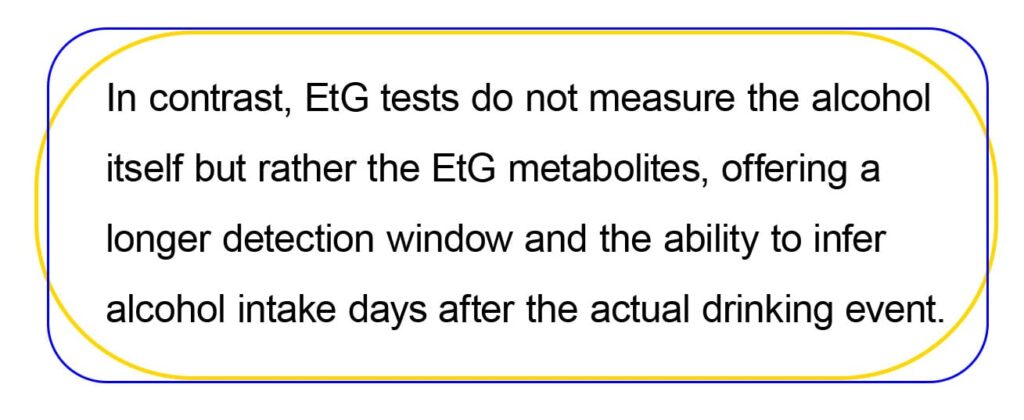How to use
Here are step by step directions on how to use this EtG calculator.
First: Under the heading "Day" click on the word "Select" and use the drop-down menu to choose the day of the week the person completely stopped consuming alcohol.
Second: Under the heading "Time" click on the clock over on the far right side (see arrow), then pick the time, in hour and minutes, when they quit drinking on that day.

Third: Hit the "Calculate" Button.
The answer will appear underneath as the soonest day and time when that person could conceivably pass an EtG type of alcohol test. (assuming they did not drink any alcohol in the meantime).
This type of alcohol test is one of the most accurate ways to detect recent alcohol use. Unlike a traditional breathalyzer that measures current intoxication, EtG testing identifies alcohol consumption over the past several days. When alcohol is metabolized in the body, it produces EtG—a direct biomarker that remains in urine, hair, or blood long after the alcohol itself has left the system.
These tests can typically detect alcohol use for up to 48–72 hours after drinking, and sometimes up to 80 hours for heavy consumption. Hair tests can detect use for up to 90 days. Because of this extended window. Testing is widely used in workplace monitoring, treatment programs, court cases, and probation settings.
They are more sensitive to the presence of alcohol than traditional tests, but this sensitivity also introduces variables that can affect the reliability of the results. Factors such as the individual's metabolism, age, gender, health condition, and even the type of alcohol consumed can influence the levels of these metabolites. Additionally, the use of products containing alcohol, such as mouthwash or hand sanitizers, can sometimes lead to false positives, highlighting the need for careful interpretation of results.
To mitigate these variables, cutoff levels have been established to distinguish between incidental exposure to alcohol (from products containing alcohol) and actual drinking. However, the interpretation of the results requires a nuanced understanding of these factors. Medical history, timing of the test relative to the alleged time of drinking, and an individual's body composition all play critical roles in accurately assessing the test outcomes.
They offer a valuable tool for detecting alcohol consumption over an extended period, far beyond the capabilities of standard alcohol screenings. Despite their advantages, the interpretation of these tests must account for a variety of variables to avoid false positives and accurately reflect an individual's alcohol consumption history. This complexity makes these tests a powerful, yet nuanced instrument in the arsenal of alcohol monitoring and detection strategies.
Most are a type of alcohol screening that can detect the presence of alcohol in a person's system for a longer period than traditional alcohol tests. Unlike standard tests that measure the actual alcohol content in the blood or breath, these tests identify the presence of this metabolite, which are byproducts of alcohol metabolism. These metabolites can remain in the body for up to 80 hours after alcohol consumption, making them a useful tool for monitoring abstinence in alcohol treatment programs, legal cases, and employment screenings.
The primary difference between and standard alcohol screening lies in their detection windows and what they measure. Traditional alcohol screenings, such as breathalyzers or blood alcohol content (BAC) tests, typically detect alcohol only for a few hours up to a day after consumption, depending on the amount of alcohol consumed and the individual's metabolism. These tests measure the presence of the metabolite ethyl glucuronide, which is involved in removing alcohol from the body.

Why It Matters
EtG testing plays an important role in accountability and recovery. For individuals in treatment, it offers a reliable way to verify abstinence and support progress toward sobriety. For employers and programs, it provides clear, objective results that help promote safety and trust.
Addiction Gap is a certified 501(c)(3) nonprofit
